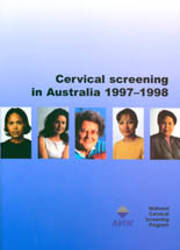Summary
- Increasing participation in cervical screening is important in reducing the number of women who present with cervical cancer and the number that ultimately die from the disease. Participation rates of the target population (women aged 20 to 69 years) increased from 62% in 1996-1997 to 64% in 1997-1998.
- Overall, 2,721,650 women were screened for cervical abnormalities in the 1997-1998 period.
- When a woman has had an abnormal result from their Pap smear or when a woman has had one or more abnormal smears followed by a negative smear, repeat testing is recommended within a 2-year interval. The programs run efficiently if they comply with the recommended screening interval. In 1997-1998, 47% of women had one or more additional smear test following a negative smear.
- In 1997-1998, the cervical screening programs detected 10,704 women with high-grade abnormalities (CIN1/2, CIN 2, CIN 3 or adenocarcinoma in situ). This was much higher in the younger age groups: in the 20-29 age group the rate of CIN was over 14 per 1,000 women screened whereas it was less than 2 per 1,000 in women aged 50-69 years.
- There were 923 new cases of cervical cancer in Australia in 1996. Cervical cancer is one of the few cancers where screening can detect pre-cancerous lesions, thereby preventing a large proportion of these pre-cancerous lesions progressing to cancer.
- Cervical cancer is the 14th most common cause of cancer death in women, accounting for 269 deaths in 1998. The death rate from cervical cancer declined in all age groups between the years 1989 and 1998.
- In the period between 1995-1997 there were 19 deaths (an age-standardised death rate of 27.6 per 100,000 women) from cervical cancer among Indigenous women. This is over nine times more deaths than in the non-Indigenous women (3.0 per 100,000 women).
- Performance standards for laboratories that report Pap smears became mandatory from 1 July 1999 and now form part of the laboratory accreditation scheme.
- Recruitment campaigns using television advertising and print media were implemented between June and November 1998 and again in 1999. These campaigns are aimed at increasing the awareness of cervical screening among women, and the importance of screening at the recommended 2-yearly intervals.



